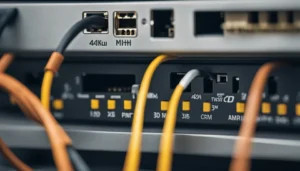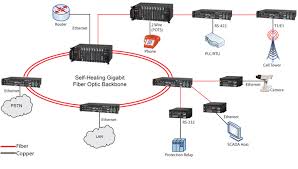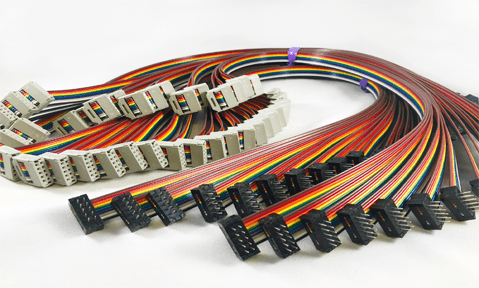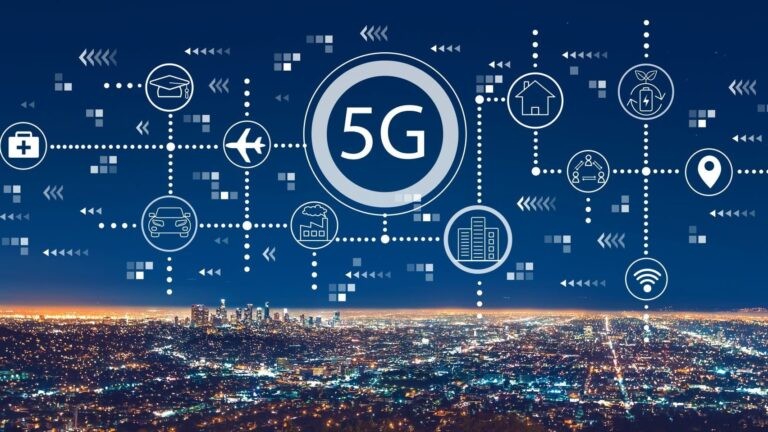Ethernet ports (RJ45) remain a crucial and dependable method for delivering stable, high-speed network connections, despite the prevalence of wireless connections in today’s technology-driven world. RJ45 Ethernet ports are the standard connectors used for wired networking, linking computers, routers, and various devices to local area networks (LANs) and the internet. They provide a level of speed, security, and reliability that wireless solutions often cannot match. This article will explore the vital role of Ethernet ports, how they operate, and why they continue to be essential in networking, even in today’s increasingly wireless environment.
1. What is an Ethernet Port (RJ45)?

The connector used for wired networking, known as an RJ45 port or Ethernet port, can be found on computers, laptops, routers, switches, modems, and other network-enabled devices. RJ45 stands for “Registered Jack 45” and is a standardized physical interface commonly used in Ethernet cables and network equipment.
Ethernet ports facilitate both data transmission and communication between devices on a local area network (LAN) and provide internet access through wired connections. The RJ45 connector on Ethernet cables contains eight pins, which enable the transmission of data using twisted-pair cabling. This connector is crucial for connecting devices to a network or the internet via a router or modem.
2. The Evolution of Ethernet
Robert Metcalfe and his colleagues at Xerox PARC developed Ethernet technology in the 1970s with the aim of establishing a local network for connecting computers and enabling efficient resource sharing and communication. Due to its simplicity, scalability, and capacity to handle large data volumes at high speeds, Ethernet quickly emerged as the primary standard for wired networking.
Ethernet has undergone advancements to support higher data transfer rates and more complex network protocols. Presently, Ethernet ports can achieve speeds ranging from 10 Mbps in older systems to 1 Gbps or even 10 Gbps and beyond in modern networks.
3. Types of Ethernet Ports and Cables

a. Fast Ethernet, also known as 10/100 Mbps, facilitates data transfer at speeds ranging from 10 Mbps to 100 Mbps. While it was a prevalent standard in homes and small businesses for many years, it has now been surpassed by faster technologies. These Ethernet ports are capable of connecting to slower devices and networks due to their backward compatibility.
b. Gigabit Ethernet, denoted as 10/100/1000 Mbps, supports speeds of up to 1 Gbps, making it well-suited for contemporary applications that necessitate rapid internet access and data transfer, such as video streaming, gaming, and file sharing. Gigabit Ethernet ports commonly utilize Cat 5e or Cat 6 cables to achieve these elevated speeds.
c. 10 Gigabit Ethernet delivers speeds of up to 10 Gbps and is primarily employed in data centers, enterprise networks, and high-performance computing environments. To support these ultra-fast speeds over extended distances, Cat 6a or Cat 7 cables are essential.
d. Power over Ethernet (PoE) is supported by certain Ethernet ports, enabling the transmission of both data and power through the same cable. This feature is particularly beneficial for devices like IP cameras, VoIP phones, and wireless access points, where separate power cables are inconvenient or unnecessary.
4. Key Features of Ethernet Ports

a. High-Speed Data Transmission
Ethernet ports have the capability to facilitate high-speed data transmission, supporting speeds from 10 Mbps to 10 Gbps. This makes Ethernet ideal for activities such as online gaming, video conferencing, and large file transfers, providing fast and stable internet access.
b. Reliable and Stable Connection
Ethernet ports offer a consistent and stable network connection, being less prone to interference from other devices, walls, or physical obstructions compared to wireless networks. This makes Ethernet the preferred option for users requiring a dependable connection, such as in business environments, data centers, and tasks necessitating constant connectivity.
c. Low Latency
Due to its wired nature, Ethernet typically delivers lower latency compared to wireless networks. This is particularly crucial for online gaming, real-time video streaming, and teleconferencing, as any delay in data transmission can lead to performance issues or interruptions.
d. Enhanced Security
Wired Ethernet connections are generally considered more secure than wireless connections because data travels through a physical cable, making it more challenging for external attackers to intercept communication compared to wireless signals, which are more susceptible to compromise.
e. Support for Multiple Devices
Ethernet ports are commonly found on network switches and routers, allowing multiple devices such as computers, printers, gaming consoles, and smart home equipment to be connected to the same network simultaneously.
5. How Ethernet Ports Work
The Ethernet port functions by transmitting and receiving data packets through a physical cable using the Ethernet protocol. This cable, usually a twisted-pair cable (such as Cat 5e or Cat 6), links one end to the device’s Ethernet port and the other end to a router, switch, or modem.
To manage data transmission and prevent collisions on the network, Ethernet utilizes a technique known as Carrier Sense Multiple Access with Collision Detection (CSMA/CD). When a device wishes to send data, it first checks if the network is busy. If the network is clear, the device sends its data. In case two devices try to send data simultaneously, a collision happens, and each device waits for a random amount of time before attempting again.
Once the data is sent through the Ethernet port, the receiving device employs its Ethernet port to receive and process the data. This approach ensures dependable, rapid, and secure communication between devices.
6. Advantages and Limitations of Ethernet Ports
Advantages
1. Ethernet provides faster and more consistent speeds compared to most wireless networks, especially with Gigabit Ethernet or higher.
2. Ethernet connections remain stable and are not affected by interference, signal strength issues, or network congestion, unlike wireless networks.
3. Wired connections offer enhanced security compared to wireless connections, making Ethernet suitable for environments where data privacy is crucial.
4. Ethernet offers lower latency, which is essential for real-time data transmission activities.
Limitations
1. Ethernet connections restrict the mobility of devices as they require physical cables, which is less convenient compared to the freedom provided by wireless connections.
2. The use of Ethernet cables may lead to clutter, particularly in setups requiring connections for multiple devices.
3. Setting up Ethernet connections in larger networks may involve significant cable installation, which can be costly and time-consuming, especially in homes or offices that are not pre-wired.
7. Ethernet vs. Wi-Fi: A Comparison
Although Wi-Fi is widely used for home and office connectivity due to its convenience and easy setup, Ethernet offers several distinct advantages:
a. Speed and Bandwidth
Ethernet generally delivers faster speeds than Wi-Fi, especially with Gigabit Ethernet connections. Wi-Fi speeds may fluctuate depending on the distance from the router, interference, and the number of connected devices.
Ethernet ensures dedicated bandwidth for each device, while Wi-Fi distributes bandwidth among all connected devices, potentially reducing performance during heavy usage.
b. Reliability
Ethernet is considerably more reliable, offering a stable and uninterrupted connection, whereas Wi-Fi may experience signal interference, congestion, and network drops.
c. Security
Ethernet is inherently more secure because data is transmitted through physical cables, reducing the risk of eavesdropping or unauthorized access. Wi-Fi networks are more susceptible to hacking if proper security protocols, such as WPA2 or WPA3, are not enabled.
d. Latency
Ethernet connections exhibit significantly lower latency, making them well-suited for gaming, video streaming, and real-time communication applications like VoIP and video conferencing.
8. The Evolution of Ethernet
As wireless technologies such as Wi-Fi 6 and Wi-Fi 7 progress, they are increasingly approaching the speed and performance of wired Ethernet. However, Ethernet remains indispensable in various environments, especially in:
Data Centers and Enterprise Networks: Where stable, high-speed, and secure connections are crucial.
Gaming and Streaming: Gamers and streamers will continue to prefer Ethernet for its exceptional performance and minimal latency.
IoT and Smart Homes: **






